OP4M 5,5x
| Das optische Visier OP4M (opticheskiy pritsel = Оптический прицел) wurde zu sowjetischer Zeit konstruiert und im Ostblock verwendet. Es wird nach wie vor von ZRAK (Sarajevo, Bosnien-Herzegowina) oder IPZ (Isjum, Ukraine) hergestellt. Es dient als Zielvisier an verrschiedenen Kanonen und Geschützen. Die kleine Beschriftungsplatte am Gehäuse ist mit OP4M-97, Nummer 80042 und weiteren kyrillischen Zeichen gekennzeichnet. Die Vergrößerung ist 5,5x, das Objektiv 32 mm im Durchmesser. Es ist mit einem optischen Linsensystem ausgetattet und hat eine Strichplatte zur Schusskontrolle und -einstellung. JE nach Verwendungstyp gibt es etwas andere Modellbezeichnungen und Strichplatten. Diese können mit einem Schlüssel in der Höhe und seitlich justiert werden (s. tropfenförmige Deckel am Gehäuse). Am grünlich-khaki-lackierten Gehäuse gibt es zwei große Drehknöpfe zum Verschieben der Strichplatte beim Anvisieren (Vorhalte-, Entfernungstrieb). Für die Beleuchtung der Strichplatte ist ein Fenster mit Montageschiene für die Lampeneinheit rechts am achteckigen Gehäuse vorhanden. Oben am Gehäuse ist eine Stirnstütze mit zwei Stangen befestigt, die sich in der geeigneten Position festklemmen lässt. Das Okular hat eine Weichgummiaguenmuschel. Am Objektivtubusende ist ein planes Schutzglas aufgeschraubt und ein Graufilter kann auch aufgesteckt werden. Der Tubus hat eine Befestigugnsschiene. In der Holztransportkiste befinden sich Ersatzschutzgläser, das Filterglas, eine Okularabdeckung aus Metall und eine Ersatzaugenmuschel sowie der Stellschlüssel. | The OP4M optical sight (opticheskiy pritsel = Оптический прицел) was constructed in Soviet times and used in the Eastern bloc. It is still manufactured by ZRAK (Sarajevo, Bosnia-Herzegovina) or IPZ (Izyum, Ukraine). It serves as a target sight on various cannons and artillery guns. The small labeling plate on the housing is marked with OP4M-97, number 80042 and some other Cyrillic characters. The magnification is 5.5x, the obejctive lens is 32 mm in diameter. It is built with an optical lens system and has a reticle for fire control and adjustment. Depending on the type of use, there are slightly different model designations and reticles. The latter can be adjusted in height and sideways with a key (see drop-shaped covers on the housing). There are two large rotary knobs on the greenish-khaki lacquered housing for moving the reticle when sighting (lead drive, distance drive). There is a window with a mounting rail for the lighting unit on the right-hand side of the octagonal housing to illuminate the reticle. A forehead rest is attached to the top of the body with two rods that can be clamped in the appropriate position. The eyepiece has a soft rubber eyecup. A flat protective glass is screwed onto the end of the obejctive tube a gray filter can also be attached. The tube has a mounting rail. The wooden transport box contains spare protective glasses, the filter glass, a metal eyepiece cover and a spare eyecup as well as the adjusting key. |
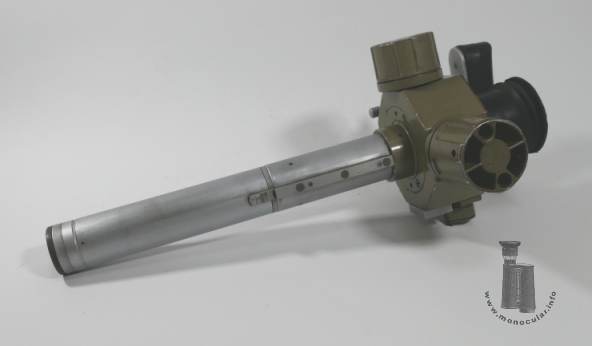

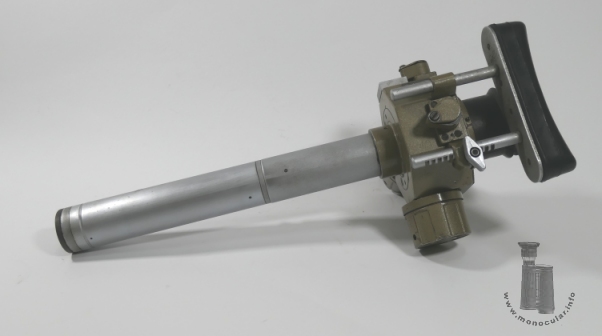
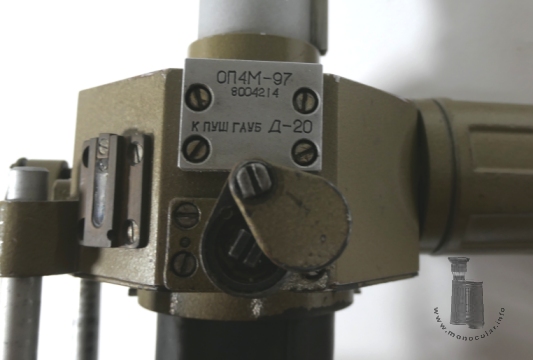
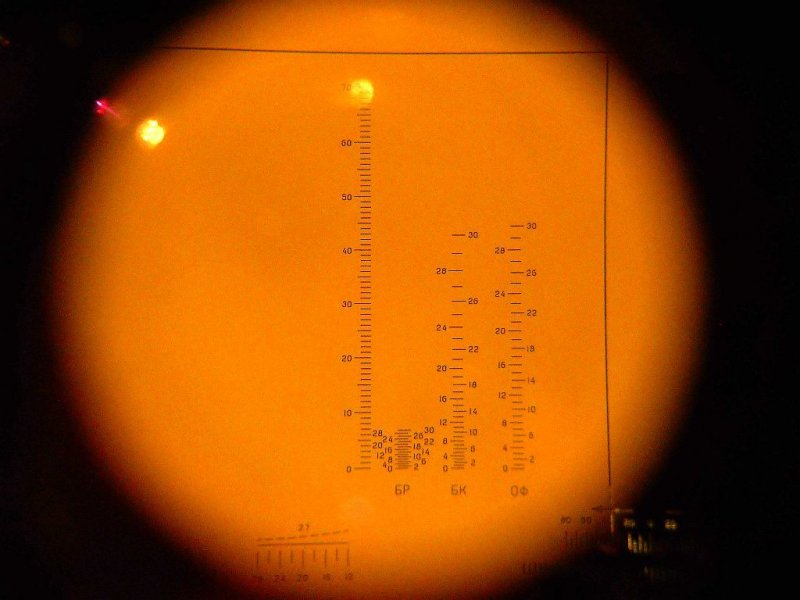
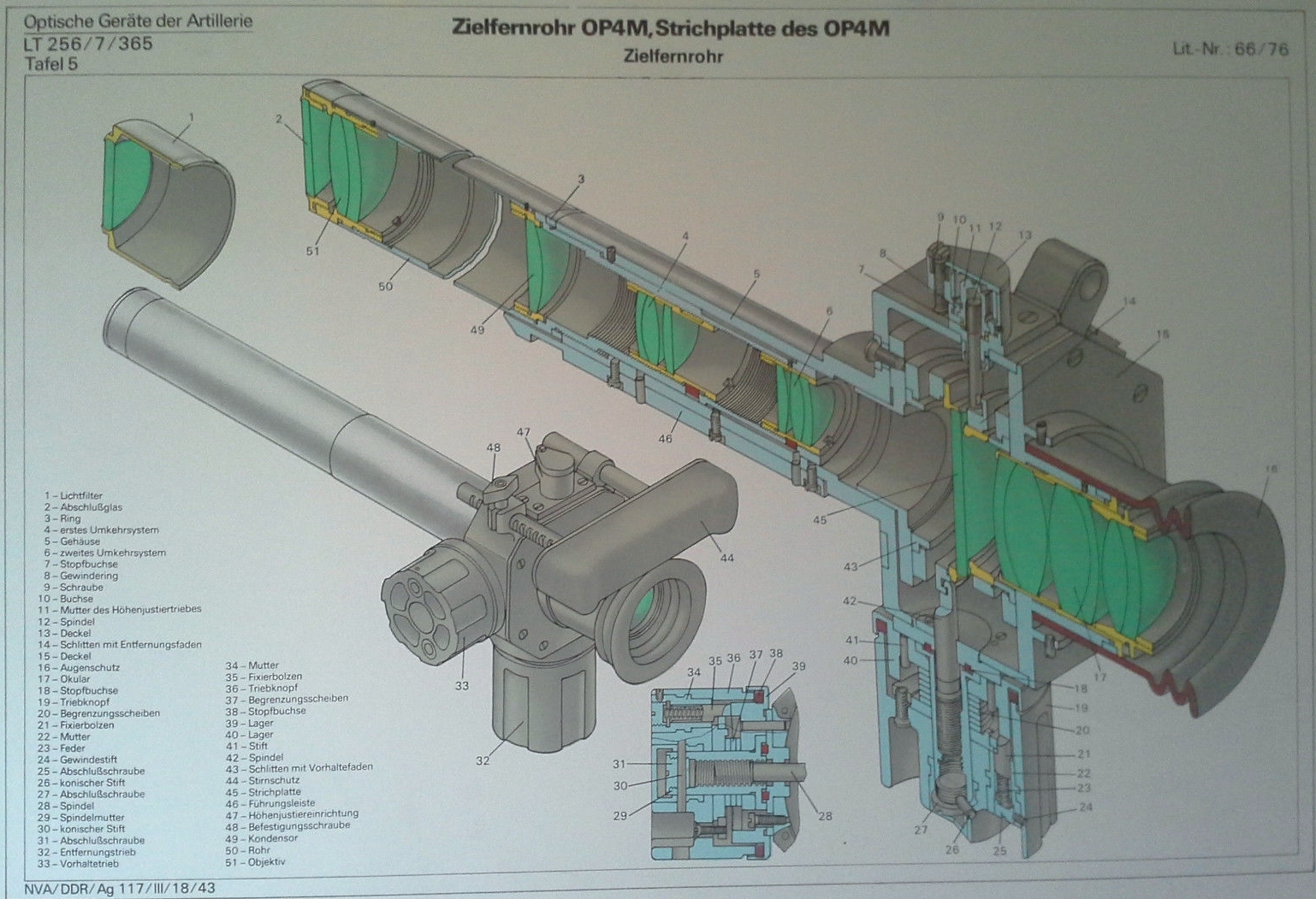
| Das OP4M ist ca. 420 mm lang, dabei ist der Tubus 270 mm, das Gehäuse 54mm und das Okular mit Augenmuschel ca. 100 mm lang. Das Zielfernrohr wiegt 4600 g. Die Augenmuschel ist am Ende 67mm, das Okularstück 56mm und der Tubus 40mm im Durchmsser. Das Gehäuse ist 104 mm breit. Die Transportkiste ist 47x23x22 cm groß und wiegt 6,3 kg. Vgl. a. www.fernglasmuseum.at |
The OP4M is c. 420 mm long, of which the tube measures 270 mm, the housing 54mm and the eyepiece and eyecup is about 100 mm long. The sight weighs 4600 g. The eyecup is 67mm at its end, the eyepiece is 56mm, and the tube 40mm in diameter. The body is 104 mm wide. The carrying case measures 47x23x22 cm and weighs 6.3 kg. Cf. also www.fernglasmuseum.at |
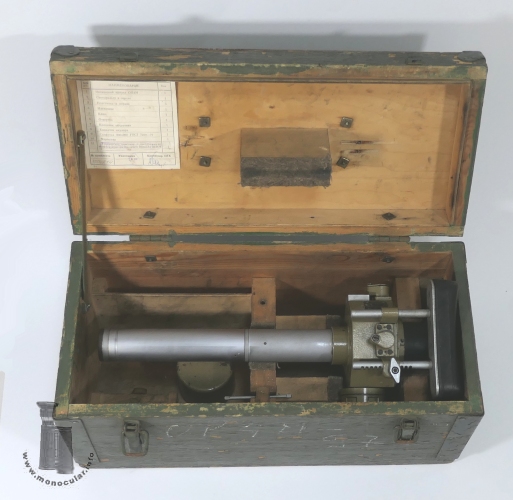
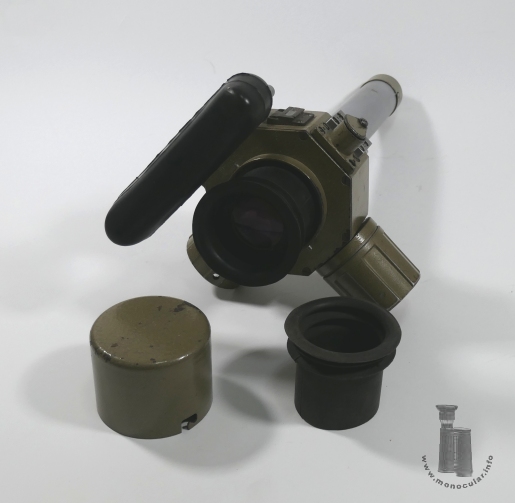
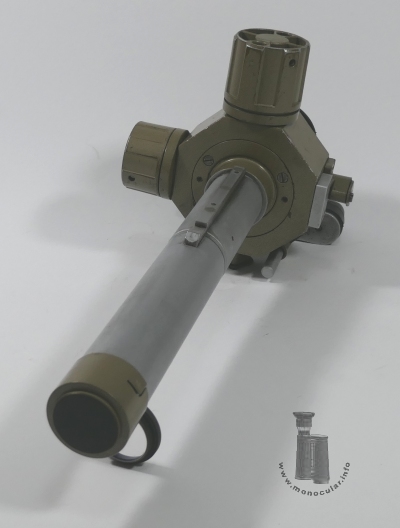
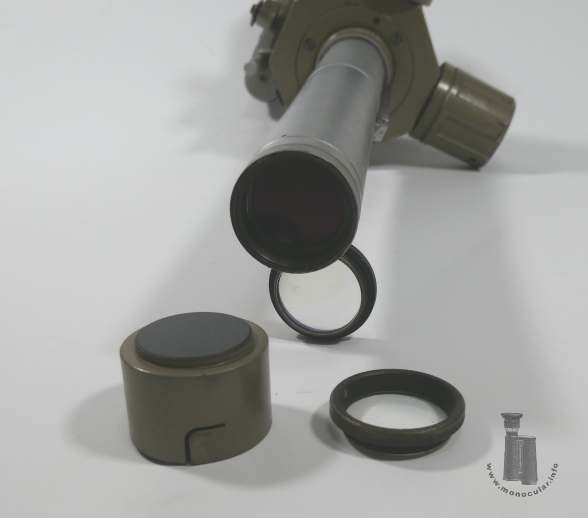
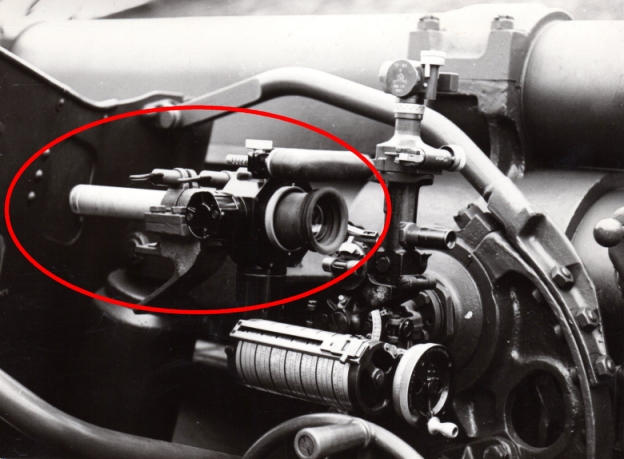
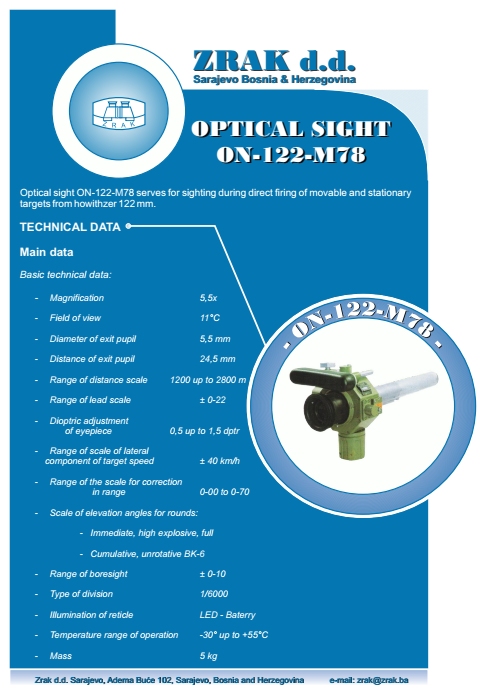
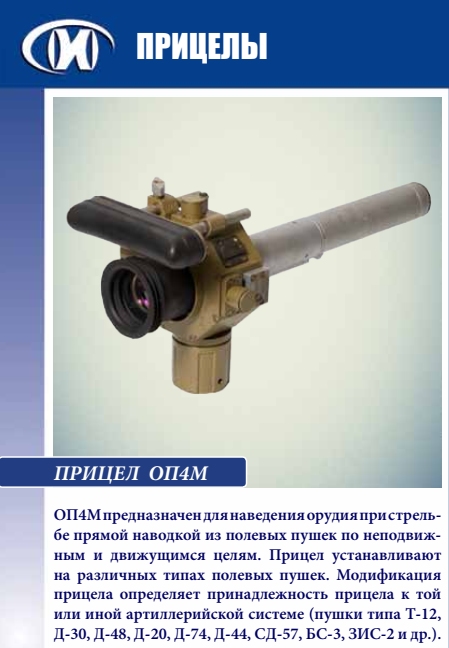
Fotos: Ebay

